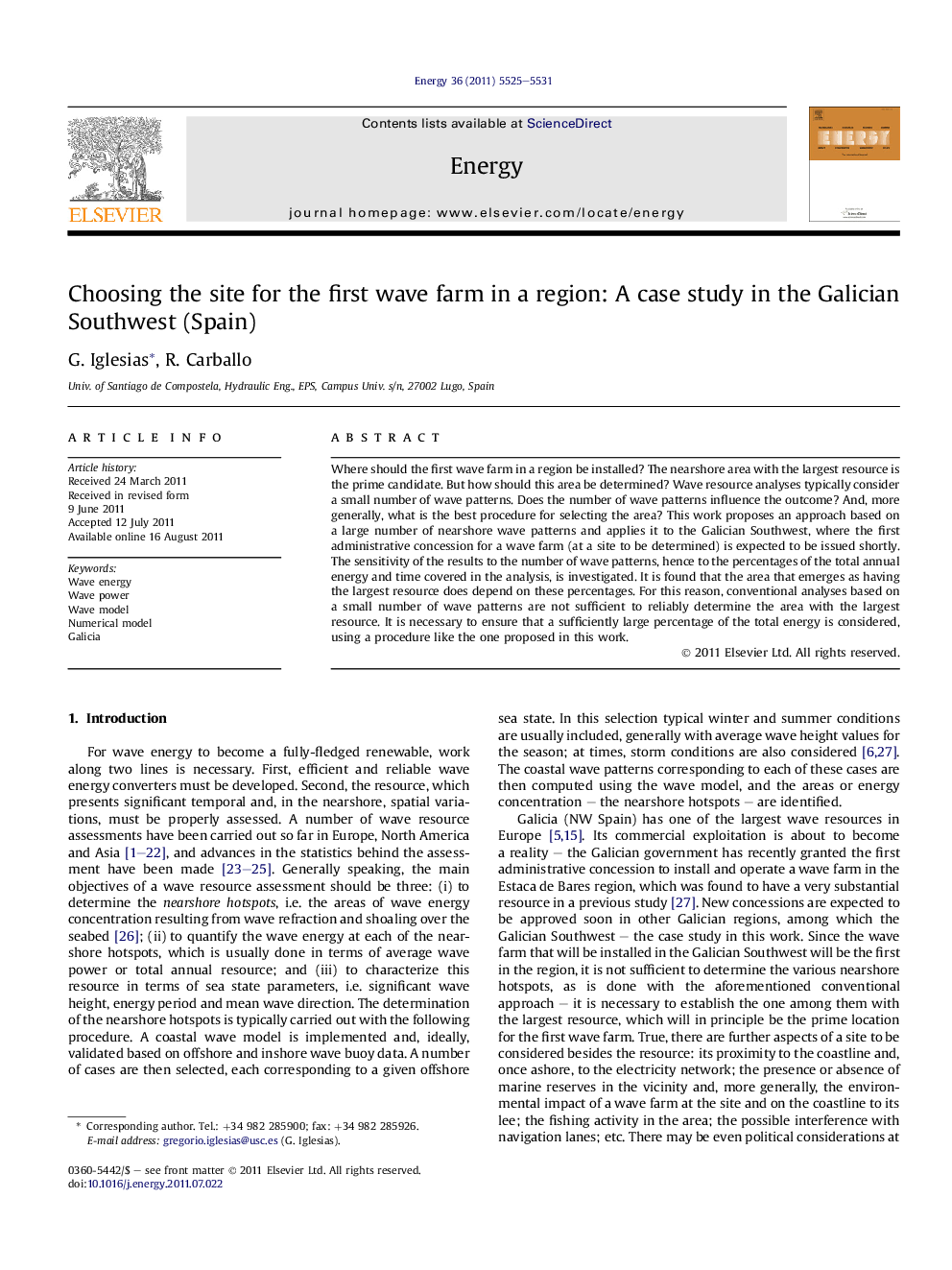| Article ID | Journal | Published Year | Pages | File Type |
|---|---|---|---|---|
| 1734574 | Energy | 2011 | 7 Pages |
Where should the first wave farm in a region be installed? The nearshore area with the largest resource is the prime candidate. But how should this area be determined? Wave resource analyses typically consider a small number of wave patterns. Does the number of wave patterns influence the outcome? And, more generally, what is the best procedure for selecting the area? This work proposes an approach based on a large number of nearshore wave patterns and applies it to the Galician Southwest, where the first administrative concession for a wave farm (at a site to be determined) is expected to be issued shortly. The sensitivity of the results to the number of wave patterns, hence to the percentages of the total annual energy and time covered in the analysis, is investigated. It is found that the area that emerges as having the largest resource does depend on these percentages. For this reason, conventional analyses based on a small number of wave patterns are not sufficient to reliably determine the area with the largest resource. It is necessary to ensure that a sufficiently large percentage of the total energy is considered, using a procedure like the one proposed in this work.
► The area with the largest resource is a prime candidate for the first wave farm. ► The procedure used to determine this area is found to affect the result. ► Conventional analyses based on a small number of wave patterns are not sufficient. ► An approach considering a large number of wave patterns is presented and applied. ► The sensitivity of results to the percentage of the total energy is investigated.
